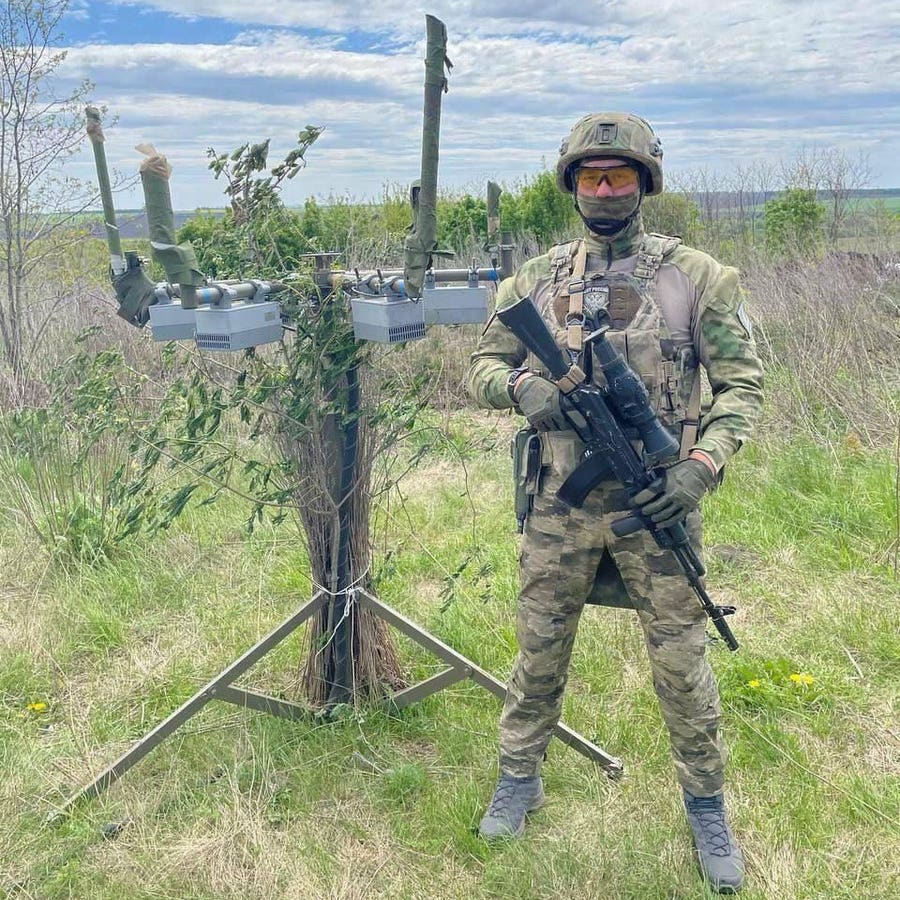Russian force in Ukraine deploy Silok radio-jammers in order to disrupt the radio links between Ukrainian drone and their operators.
But the Ukrainians have knocked out several Siloks. With drones. Most recently, a Mavic quadcopter from Ukraine’s Aerobomber unit bombed, with grenades, a tripod-mounted Silok—apparently destroying it.
Add the drone raids on Silok counter-drone systems to the long, and lengthening, list of ironic operations by Ukrainian forces. Ukrainian artillery blasting a Russian counter-artillery radar. A Ukrainian GPS-guided bomb blowing up a Russian GPS-jammer. And many, many examples of Ukrainian drones bombing Russian drone-jammers.



because you have to find drone first, acquire its location and quite precisely at that, and at this point short burst of 12.7mm is more reliable. jammers don’t need any directivity and work over any number of drones in area covered
Guns are heavy and slow. Light is near instantaneous and has no trajectory. A targeting laser can move extremely fast and a 360° camera with AI object recognition can pick up targets faster than any human. Targeting does not need to be accurate as a common high power diode laser can fry any optical sensor upon contact. Just aim and add a little jitter in the region of the issue. It should also be possible to use UV lasers that are outside of the visual spectrum. It is not hard to spot these with optics designed for the task, but most military optics seem to focus on IR, so UV should be much less visible while being much higher energy and causing more damage quickly. It should be possible and not require the radio emissions of a jammer.
lasers with power required would be also pretty heavy, and only as fast as operator, so about the same as AA guns